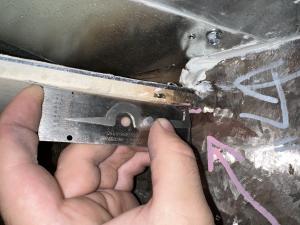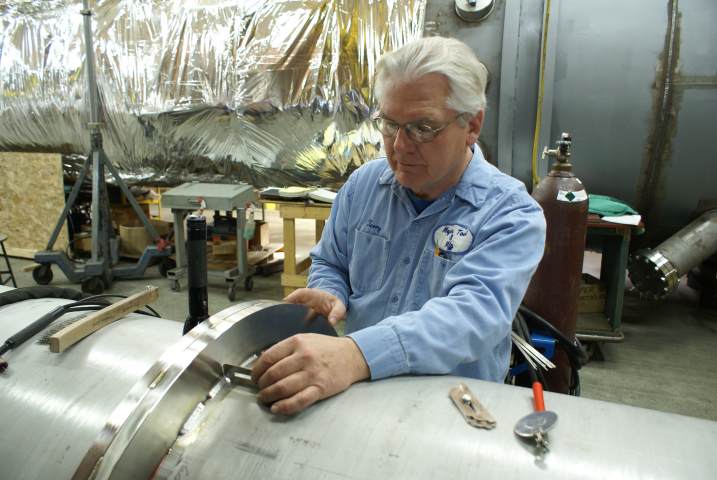Understanding the Standards for Welding Inspection Gilbert Arizona: A Full Introduction
Understanding the Standards for Welding Inspection Gilbert Arizona: A Full Introduction
Blog Article
A Comprehensive Overview to Welding Inspection: Understanding Standards, Techniques, and Best Practices for Quality Assurance
Welding inspection plays a pivotal role in ensuring the structural integrity and safety and security of bonded parts, demanding a thorough understanding of industry criteria such as those developed by AWS and ASME. Different evaluation methods, including ultrasonic and aesthetic screening, are utilized to discover potential defects that can endanger top quality. Carrying out best practices can considerably enhance functional dependability and foster count on among customers. As we check out these important aspects, it ends up being apparent that the ramifications of welding inspection extend much past conformity, inviting a closer examination of just how these procedures form market standards and practices.
Value of Welding Inspection
Welding evaluation plays a critical role in making sure the honesty and safety of welded structures. It is a vital procedure that validates that welds satisfy predefined specs, which is crucial in numerous sectors, consisting of building and construction, auto, and aerospace. By conducting extensive assessments, possible issues such as splits, incomplete fusion, and porosity can be identified early, avoiding disastrous failings that can lead to accidents or expensive repair services.
The relevance of welding inspection prolongs beyond simple conformity with laws; it also fosters count on with stakeholders. Clients and governing bodies anticipate guarantee that the frameworks they rely upon are developed to hold up against operational stresses. Additionally, efficient welding evaluation methods add to lasting resilience and efficiency of the frameworks, eventually resulting in decreased maintenance prices.
Additionally, welding examination promotes a society of top quality within organizations, encouraging adherence to ideal methods and continuous renovation. By incorporating evaluation procedures into the welding operations, business can enhance their online reputation and establish themselves as leaders in high quality guarantee. In verdict, the relevance of welding inspection hinges on its capability to guard lives, make sure structural reliability, and maintain market requirements, making it an important facet of welding operations.
Key Industry Standards
Ensuring compliance with vital market standards is essential for preserving the high quality and safety of bonded frameworks. Various companies establish these standards to advertise finest techniques in welding and inspection - Welding Inspection Gilbert Arizona. Among one of the most acknowledged are the American Welding Culture (AWS) and the American Society of Mechanical Engineers (ASME), which give in-depth standards and specifications for welding processes and assessment standards
AWS standards, such as AWS D1.1 for structural welding, synopsis requirements for materials, style, and screening to ensure the integrity of welds. Likewise, ASME codes, consisting of ASME Area IX, regulate the certification of welders and welding treatments, ensuring regular quality in commercial applications. Worldwide, the ISO 3834 typical stresses top quality needs for blend welding, giving a structure for companies to demonstrate compliance with global best practices.
Conformity with these criteria not just improves the dependability of welded structures yet additionally minimizes threats related to architectural failures. Additionally, adherence to industry standards is often a requirement for governing authorizations and can substantially influence project requirements. Inevitably, understanding and carrying out these crucial standards are essential for reliable welding evaluation and quality control.
Assessment Techniques Summary
Effective welding inspection depends on a variety of techniques designed to assess the top quality and honesty of welds. These methods can be generally categorized right into damaging and non-destructive testing (NDT) techniques. Non-destructive testing methods, which are extensively chosen in the sector, enable the examination of welds without compromising the stability of the product.

Amongst one of the most commonly utilized NDT strategies are visual evaluation, ultrasonic screening, radiographic screening, and magnetic particle testing. Aesthetic examination is typically the very first step in the assessment procedure, making it possible for inspectors to identify surface flaws and assess weld bead profiles. Ultrasonic screening utilizes high-frequency audio waves to spot interior problems and gauge the density of welds. Radiographic screening involves using X-ray or gamma-ray imaging to disclose internal flaws, while magnetic particle screening works for identifying surface and near-surface gaps in ferromagnetic materials.
Each strategy has its very own advantages and limitations, making it important for inspectors to select the most suitable technique based on the particular demands of the job, the materials included, and the criticality of the welds being checked. This mindful choice makes certain extensive analyses and promotes security and high quality criteria in welding operations.
Typical Flaws and Their Ramifications
A thorough understanding of typical flaws in welds is crucial for maintaining architectural integrity and safety and security in welded building and constructions. Welding flaws can considerably endanger the mechanical properties of the joint, causing failures that might endanger both workers and equipment.
Typical defects consist of porosity, which manifests as little gas pockets entraped in the weld metal, damaging the overall framework. Cracking is one more widespread problem, usually resulting from fast cooling or incorrect joint layout, leading to anxiety focus that can result in disastrous failings. Incomplete combination happens when recommended you read the weld steel fails to correctly bond with the base product, developing powerlessness that may bring about separation under load.
Other remarkable defects include damaging, where the weld grain erodes the base metal, and slag inclusions, which can prevent the weld's strength. Each of these defects has particular ramifications; for circumstances, porosity can lower ductility, while cracking directly affects tensile stamina. Determining and recognizing these issues throughout examination is important for executing restorative procedures and making sure conformity with sector criteria, inevitably guarding the architectural honesty of bonded settings up.
Finest Practices for Quality Control
Executing best practices for quality control in welding procedures is crucial for attaining optimum outcomes and lessening flaws. One vital method is the establishment of clear welding procedures that comply with market requirements and specs. These procedures should consist of thorough guidelines relating to material choice, joint preparation, and welding methods to guarantee consistency and top quality.
Routine training and certification of welding employees are likewise important. Competent welders who understand the relevance of high quality guarantee are much more most likely to create sound welds. Furthermore, executing a robust assessment program, including both aesthetic and non-destructive screening (NDT), can assist identify issues early at the same time, enabling prompt corrective activities.

Lastly, fostering a culture of high quality within the organization motivates workers to focus on top quality in their job. By sticking to these ideal practices, organizations can enhance the integrity of their welding processes, ultimately leading to see improved product quality and decreased costs related to rework and repair work.

Conclusion
In final thought, welding inspection plays read the article an essential function in guaranteeing the honesty and security of welded frameworks. By executing ideal methods, organizations can improve reliability, decrease maintenance prices, and cultivate trust fund among customers, eventually adding to successful welding procedures.
In addition, welding evaluation advertises a culture of high quality within companies, encouraging adherence to finest techniques and continuous enhancement. In verdict, the significance of welding assessment exists in its ability to protect lives, make certain architectural reliability, and maintain sector standards, making it an essential element of welding procedures.
Amongst the most recognized are the American Welding Society (AWS) and the American Culture of Mechanical Designers (ASME), which provide comprehensive standards and requirements for welding processes and evaluation requirements.
Inevitably, understanding and implementing these essential requirements are crucial for effective welding evaluation and high quality assurance.
Efficient welding assessment depends on a selection of strategies developed to examine the top quality and honesty of welds.
Report this page